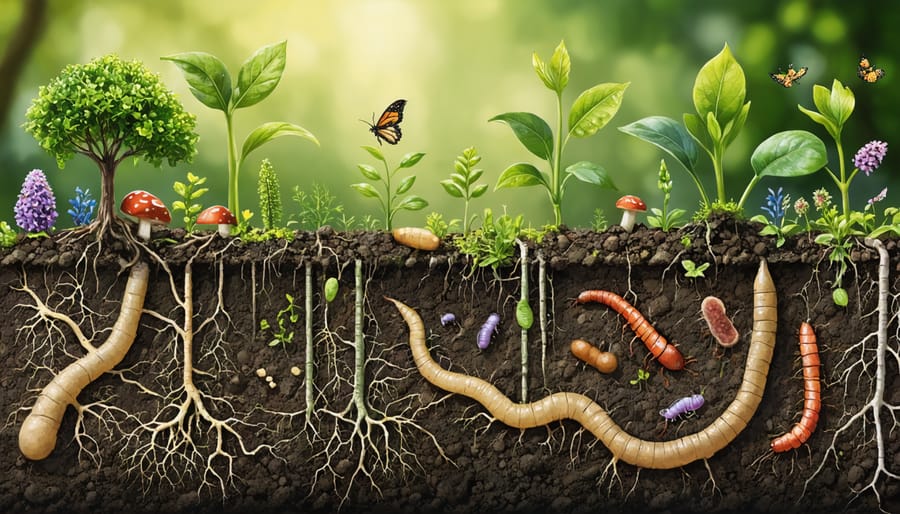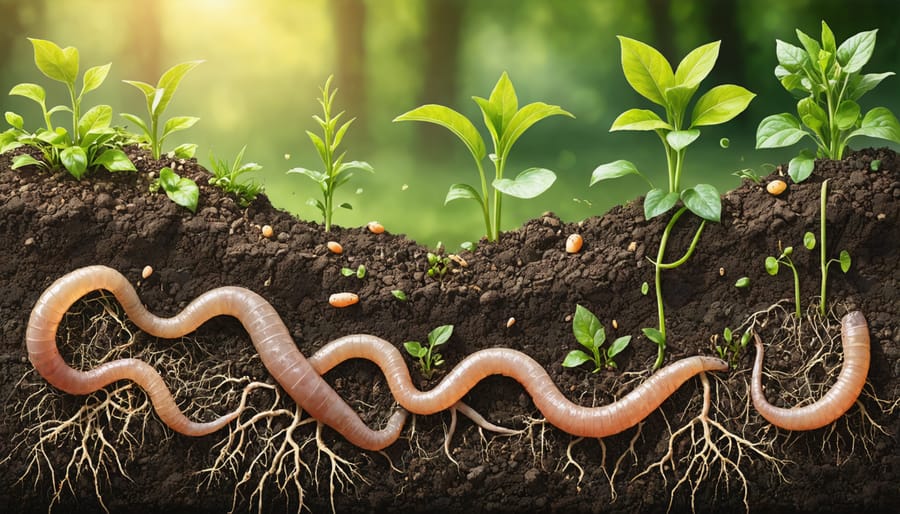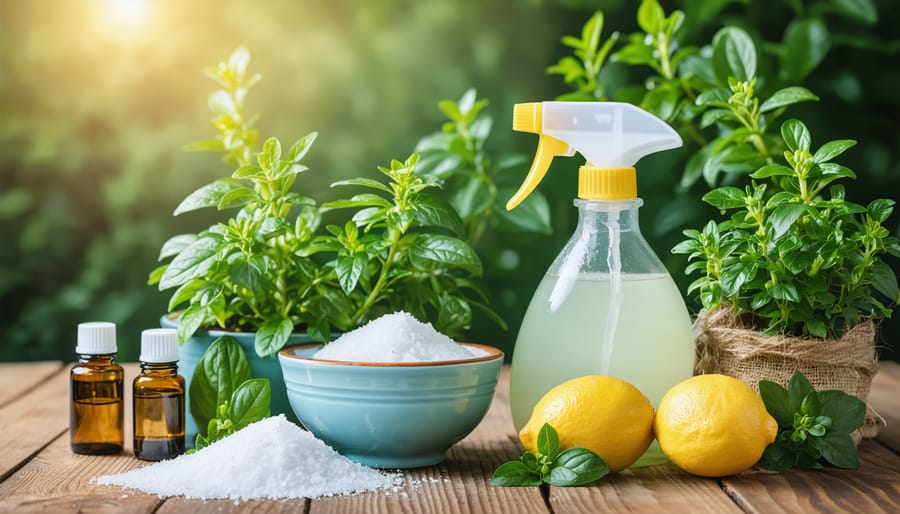Beneath every thriving garden lies a hidden world of extraordinary biodiversity – a complex web of life that shapes the very foundation of our growing success. From microscopic bacteria to industrious earthworms, these countless organisms work in harmony to create healthy soil, support plant growth, and maintain nature’s delicate balance. Understanding this underground ecosystem isn’t just fascinating – it’s essential for every gardener who wants to cultivate abundant, sustainable gardens. Whether you’re a seasoned grower or just starting your garden journey, the questions we explore about biodiversity will transform how you view the soil beneath your feet and empower you to work in partnership with nature’s most remarkable systems. Join us as we dig deeper into the mysteries of soil life and discover how fostering biodiversity can revolutionize your gardening practice.
What Makes Healthy Soil Actually ‘Living’?
The Invisible Garden Heroes
Beneath every thriving garden lies a bustling microscopic world that often goes unnoticed. These beneficial soil microbes are the true heroes of your garden, working tirelessly to support plant health and soil fertility. From bacteria that transform organic matter into plant-available nutrients to fungi that create vast underground networks connecting plant roots, these tiny organisms are essential for maintaining healthy soil ecosystems.
Think of your soil as a living city where billions of microorganisms collaborate to break down organic matter, cycle nutrients, and even help plants communicate with each other. Bacteria act as decomposers, transforming dead plant material into rich humus. Fungi form partnerships with plant roots, extending their reach and helping them access water and nutrients. Even the smallest protozoa play crucial roles by controlling bacterial populations and releasing nitrogen that plants can use.
These microscopic garden helpers also strengthen plants’ natural defenses against diseases and create soil structure that allows roots to breathe and grow. By understanding and supporting these invisible allies, you can create a more resilient and productive garden ecosystem.

Beyond Worms: Your Soil’s Other Inhabitants
While earthworms might be the stars of the soil show, they’re just one part of a fascinating underground community. Your garden soil is home to an incredible cast of larger organisms, each playing a unique role in maintaining soil health. Beetles and their larvae help break down plant material and create valuable tunnels for air and water. Millipedes are nature’s recycling crew, chomping through fallen leaves and organic matter to create rich humus.
You might spot beneficial centipedes darting through your soil, hunting harmful garden pests and helping maintain the delicate balance of your garden ecosystem. Even seemingly pesky creatures like moles have their benefits – their tunneling activities help aerate the soil and distribute nutrients throughout your garden beds.
Ground-dwelling bees and other beneficial insects often make their homes in well-maintained soil, contributing to both pollination and pest control. By maintaining a healthy soil environment with plenty of organic matter and minimal disturbance, you’re creating a welcoming habitat for these helpful creatures that work tirelessly to keep your garden thriving.
How Do Your Garden Practices Affect Soil Life?
Friendly vs. Harmful Gardening Methods
When it comes to nurturing soil biodiversity, your gardening choices can make a big difference. Let’s explore which practices help your soil thrive and which ones might be doing more harm than good.
Friendly practices that boost soil life include mulching with organic materials, which provides food and shelter for beneficial organisms while maintaining soil moisture. Composting is another winner, introducing diverse microorganisms and nutrients that enrich your soil ecosystem. Crop rotation and companion planting help prevent pest problems naturally while supporting different types of soil life.
On the flip side, some common gardening practices can harm soil biodiversity. Chemical fertilizers might give plants a quick boost, but they can disrupt the delicate balance of soil microorganisms. Over-tilling disturbs soil structure and can destroy fungal networks that plants depend on. Bare soil exposure to sun and rain can lead to erosion and loss of beneficial organisms.
The good news is that switching to biodiversity-friendly methods is simple! Start by reducing chemical inputs and replacing them with organic alternatives. Leave plant roots in the ground after harvest to maintain soil structure. Consider no-dig methods that minimize soil disturbance. Remember to keep your soil covered with either living plants or mulch throughout the seasons.
These small changes in your gardening routine can create a thriving underground ecosystem that supports healthier, more resilient plants.
Signs Your Soil Biodiversity Is Struggling
Your garden’s soil tells a story through various signs that are easy to spot once you know what to look for. If you’re noticing compacted soil that’s hard to dig into, or soil that forms a crusty surface after rain, these could be warning signs of poor biodiversity. Another telltale indicator is the absence of earthworms when you dig – these wonderful creatures are nature’s soil engineers, and their absence often signals underlying issues.
Plants can also reveal soil health problems. If your vegetables are struggling to grow despite regular care, or if you notice unusual patterns of disease spreading through your garden, your soil ecosystem might need attention. Yellow or stunted plants, despite adequate fertilization, could indicate that beneficial microorganisms are missing from your soil community.
The good news is that you can transform lifeless soil into thriving ecosystems with the right approach. Keep an eye out for these additional warning signs: water pooling on the surface after rain, few or no beneficial insects visiting your garden, and plants that seem to require increasing amounts of fertilizer to produce the same results.
Remember, healthy soil should have a pleasant earthy smell and crumble easily in your hands. If your soil lacks these characteristics or you’re spotting multiple warning signs, it’s time to take action to restore your soil’s biodiversity.

Simple Steps to Boost Your Soil’s Biodiversity
No-Till Techniques That Work
No-till gardening is one of the best ways to protect and enhance soil biodiversity. Instead of turning or digging the soil, which disrupts delicate fungal networks and soil structure, focus on working with nature’s processes. Start by adding organic matter directly on top of your existing soil – this mimics how leaves naturally fall and decompose in forest environments.
Layer your materials strategically: begin with a base of cardboard or several sheets of newspaper to suppress weeds, then add a thick layer of compost followed by mulch like straw, leaves, or wood chips. This “lasagna” method creates ideal conditions for earthworms and beneficial microorganisms to thrive while naturally improving soil structure.
When planting, simply move aside the mulch and create small holes for your seeds or transplants. For larger plants, you can make planting pockets by removing just enough mulch and soil to accommodate the root ball. As plants grow, continue adding organic matter around them, maintaining a constant 2-3 inch layer of mulch.
Consider using cover crops during off-seasons. Plants like clover, rye, or vetch protect the soil surface and add nutrients naturally when cut down and left as green mulch. Their roots also create channels that improve water infiltration and provide highways for soil life to move through.
For perennial beds, adopt a “chop and drop” approach – trim plants and leave the cuttings right there as mulch. This provides continuous food for soil organisms while protecting the soil surface. Remember, every time you avoid disturbing the soil, you’re helping preserve the complex underground ecosystem that makes your garden thrive.

Creating a Soil Food Web in Your Garden
Creating a thriving soil food web in your garden is easier than you might think! Start by adding a generous layer of organic matter like compost, fallen leaves, or aged manure to your soil. This provides food and shelter for beneficial organisms that will make your garden flourish.
Next, minimize soil disturbance by adopting no-dig practices where possible. Every time you turn the soil, you disrupt the intricate networks of fungal hyphae and microscopic organisms that are hard at work improving your soil structure.
Keep your soil covered with mulch throughout the year. A 2-3 inch layer of straw, wood chips, or shredded leaves will protect soil life from temperature extremes while maintaining consistent moisture levels. This creates ideal conditions for earthworms, beneficial bacteria, and other soil organisms to thrive.
Diversify your plantings to support different types of soil life. Include deep-rooted plants like comfrey or yarrow to break up compacted soil, and add nitrogen-fixing plants such as peas or clover to naturally enrich your soil. Consider planting perennials alongside your vegetables – their established root systems provide permanent homes for beneficial microorganisms.
Avoid chemical fertilizers and pesticides, as these can harm beneficial soil organisms. Instead, brew compost tea or add worm castings to boost microbial activity naturally. Remember, healthy soil life leads to healthier plants that are naturally more resistant to pests and diseases.
Monitor your progress by checking soil texture and observing earthworm populations. As your soil food web develops, you’ll notice improved soil structure, better water retention, and more vigorous plant growth.
As we’ve explored throughout this article, biodiversity is the cornerstone of a healthy garden ecosystem. By understanding and nurturing the complex web of life in our gardens, we can create thriving spaces that benefit both nature and our growing success. Remember that every small action counts – whether it’s adding diverse plant species, creating wildlife habitats, or adopting organic gardening practices.
Start by implementing one or two biodiversity-friendly practices and gradually expand your efforts. Consider keeping a garden journal to track the positive changes you observe, from increased pollinator visits to improved soil structure. Share your experiences with fellow gardeners and learn from their journeys too.
The beauty of gardening for biodiversity is that it’s a continuous learning experience. As you watch your garden transform into a vibrant ecosystem, you’ll discover new species, witness fascinating interactions, and develop a deeper connection with nature. Your garden can become a sanctuary for wildlife and a source of inspiration for others in your community.
Let’s work together to create gardens that celebrate and protect biodiversity, one thoughtful choice at a time.




